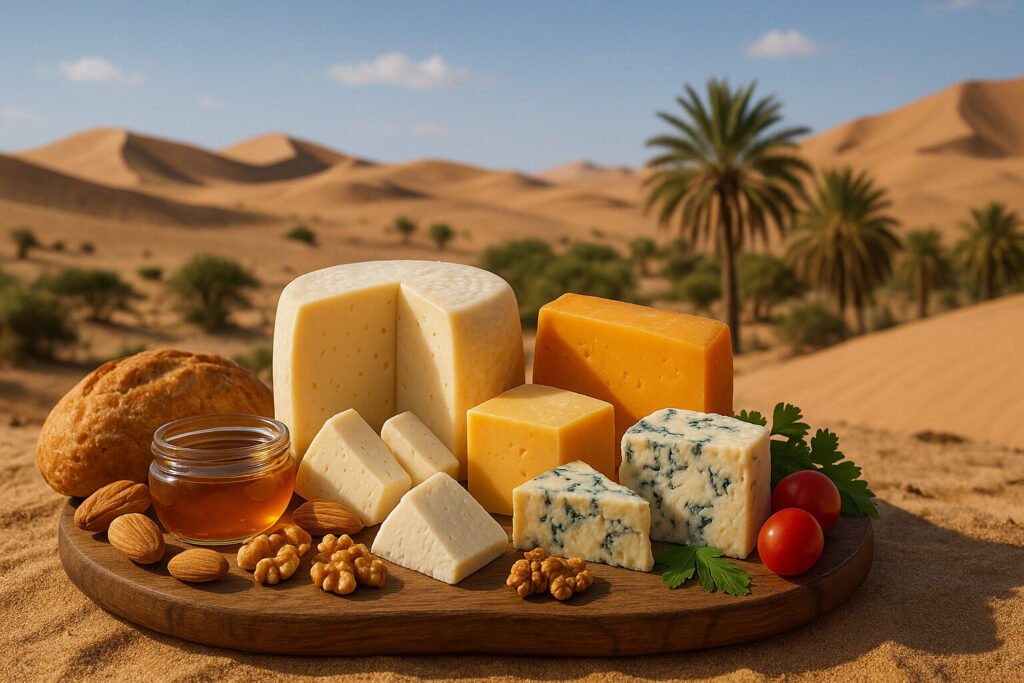Cheese Of Gulf States
Definition and Scope
Cheese from the Gulf States refers to dairy products traditionally made in countries bordering the Persian Gulf. This category includes fresh, brined, and processed cheeses that are adapted to the local climate and culinary practices. These cheeses are often characterized by their high salt content, which acts as a preservative in the region’s warm temperatures.
The scope encompasses varieties from nations such as Saudi Arabia, the United Arab Emirates, Kuwait, Qatar, Bahrain, and Oman. Many of these cheeses are made from cow’s, goat’s, or sheep’s milk, reflecting the available livestock. They play a significant role in the daily diet and are integral to both traditional and modern Gulf cuisine.
Production Techniques
Traditional production often involves simple methods, such as curdling milk with natural acids or rennet, followed by pressing and brining. The brining process is particularly crucial, as it imparts a salty flavor and extends shelf life without refrigeration. Many Gulf cheeses are consumed fresh or after a short aging period.
Modern techniques have introduced pasteurization and standardized processes to ensure food safety and consistency. Some producers now use controlled fermentation and specific bacterial cultures to develop desired textures and flavors. Despite these advancements, artisanal methods persist in rural areas, preserving heritage recipes.
Sensory Profile
Gulf cheeses typically exhibit a pronounced salty taste due to the brining step. Their textures range from soft and spreadable, like some fresh cheeses, to semi-hard and crumbly. The flavor profile is generally mild and milky, with subtle tangy notes from fermentation.
Aromas are clean and dairy-forward, without the strong pungency found in many aged European cheeses. The color is usually white to off-white, as these cheeses rarely include added coloring agents. The mouthfeel can be moist and slightly grainy, depending on the specific variety and moisture content.
Culinary Uses
These cheeses are versatile ingredients in Gulf cuisine, commonly featured in breakfast dishes, sandwiches, and pastries. They are often paired with flatbreads, olives, and dates for a traditional meal. Their meltability makes them suitable for cooked dishes like savory pies and grilled cheese sandwiches.
In contemporary cooking, Gulf cheeses are used in salads, stuffed vegetables, and as toppings for manakish (a type of Levantine pizza). Their saltiness can enhance the flavor of bland staples like rice and lentils. They are also enjoyed as standalone snacks, sometimes drizzled with olive oil or sprinkled with herbs.
Regional Examples
Jibneh Arabieh is a popular white brined cheese found throughout the Arabian Peninsula. It has a firm yet pliable texture and is often used in cooking or eaten fresh. Another example is Ackawi, a semi-hard cheese originating from the Levant but widely consumed in the Gulf.
In Saudi Arabia, cheeses like Baladiyah are traditional fresh varieties made from goat’s or sheep’s milk. The UAE and Oman produce similar brined cheeses that are integral to local food culture. These examples highlight the diversity within the category, despite shared production techniques and flavor profiles.

